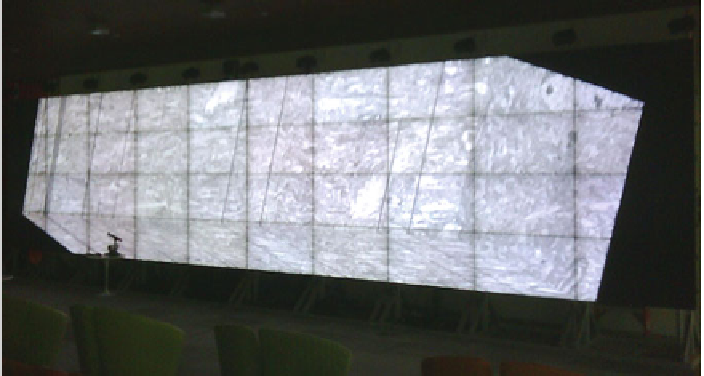Image Processing Reference
In-Depth Information
Fig. 29.2
A high-resolution electron microscopy (EM) volume of brain tissue, rendered on a
large display wall consisting of 10
×
4 individual LCD displays. Each screen has a resolution of
×
×
1,366
768, leading to a total display resolution of 13,660
3,072
dleware
—that supports distributing data to multiple displays. The next section gives
an overview of common middleware for large-scale displays. Another important
issue on a completely different conceptual level is, how users can interact with
visualizations on large displays, where the typical mouse and keyboard interaction
used on desktop systems is not a good fit.
29.3.1 Middleware for Visualization on Large Displays
Well-known software frameworks for visualization on large displays are the WireGL
system [
5
,
24
,
25
], its successor Chromium [
26
], Equalizer [
17
,
18
], SAGE [
29
-
32
,
53
], and CGLX [
16
].
A crucial differentiating property of these frameworks is how and where they
interface with application code, whether and how they require the application code
to split up the data to be visualized, as well as where in the graphics pipeline this
distribution occurs [
42
]. This determines the crucial trade-off between the obtainable
performance, and the magnitude of required changes to application code and the
algorithms employed.
The WireGL system [
5
,
24
,
25
] allows rendering with scalable output resolution
using unmodified application code. WireGL substitutes the regular OpenGL driver
with an implementation that can automatically distribute the OpenGL command
stream to multiple rendering and display nodes. This process is completely trans-
parent to the application, and thus no changes to the application code are necessary.

Search WWH ::

Custom Search